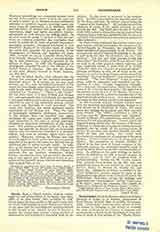

Coussemaker, CHARLES-EDMOND-HENRIDE, French historian of music, b. at Bailleul, department of Nord, France, April 19, 1805; d. at Lille, January 10, 1876. Coussemaker rendered great service to musical science by bringing to the notice of students the early development and history of harmony and counterpoint, as shown by the treatment of these divisions of music in that section of the “Musica Enchiriadis” in which diaphony is treated. This he did in a work on Hucbald, who lived from about 840 to 930, was a monk of the monastery of Saint-Amand, and wrote the “Enchiriadis” as well as other works on music. While pursuing his law studies in Paris, Coussemaker studied singing under Pellegrini and Payer and harmony under Reicha. Even after entering upon his career as a lawyer at Douai, he took a course in counterpoint under Victor Lefebvre. His early ambition to become a composer, especially of church music, did not produce permanent results, as most of his productions in that field remain in manuscript. While acting as judge at Bergues, Hazebrouck, Cambrai, Dunkerque, and Lille successively, he pursued studies and made researches which resulted in works of the highest historical importance and of permanent value. His writings have had an important part in the revival of true church music that began some sixty years ago, and in the restoration, which has not yet reached its culmination, of the chant. The pioneer nature of Coussemaker’s labors in many fields explains and condones to some extent the fact that he was not always correct in his deductions. Thus his assertion (Histoire de l’harmonie, c. ii, pp. 158-159) that the neums “have their origin in the accents of the Latin language”, an assumption which became the basis for the so-called oratorical rhythm in plain chant, was disproved long ago by the mensuralist school of chant rhythm and, more recently, by the Rev. J. Thibaut in his work “Origine byzantine de la notation neumatique de l’eglise latine” (Paris, 1907). Coussemaker’s most noted musico-historical works are: “Memoires sur Hucbald” (1841); “Histoire de l’harmonie au moyen age” (1852); “Les harmonistes des XII et XIII siecles” (1864); “Oeuvres completes du trouvere Adam de in Halle” (1872); “Joannis Tinctoris Tractatus de Musica”, and his collection in four volumes, intended to be a continuation of Gerbert’s “Scriptores”, of writings by medieval authors entitled: “Scriptorum de musica medii aevi nova series a Gerbertino altera” (1866-76). Besides these, Coussemaker published numerous essays and magazine articles on historical, technical, and aesthetic questions in regard to music.
JOSEPH OTTEN

